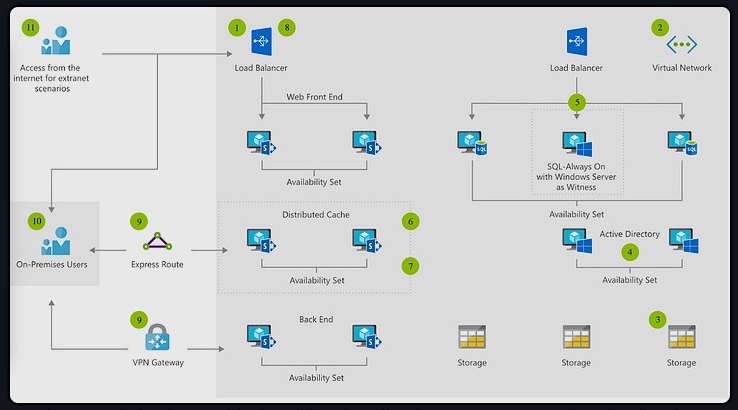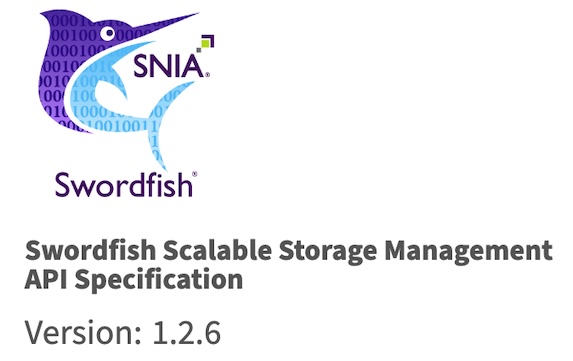From launch services to subscription satellites
Romantic minds would argue that our heads rest on a pivot joint because we humans were meant to gaze up at the stars – and they wouldn’t be wrong. From the Pyramid builders and the Apollo missions fueled by the Cold War to Elon Musk finding his first inspiration in “The Hitchhiker’s Guide to the Galaxy”, the idea of space has always had a strong pull on the human mind.
In the span of only a few decades, we went from being a terrestrial, star-longing species to a civilization of explorers. Should things keep evolving at this pace, we may even be settlers one day. However, the will to venture into and beyond the sky that our ancestors were only ever able to admire isn’t anything new. If given the possibility, many of us would dare to explore the world beyond our stratosphere. But the key word here is possibility. .
Since its infancy, space exploration has been a financially prohibitive endeavor for anyone not blessed with government support. The costs, the technical expertise, the heavy investments required, and the uncertain returns have always kept the bar impossibly high – that is, until the rise of private companies.
Fast forward to 2020. For the first time in human history and after years of skepticism [1], we were able to access space with a vehicle built and owned not by any government but rather by a private corporation [2]. This marked the beginning of the Commercial Age of Space.
The entry of private entities was the much-needed (and competition-driven) spark to ignite the fire of progress – and it is already happening. The landscape is now littered with new companies. And a new business model could soon be about to make waves in this fast-moving field: Space as a Service.
A quick definition
Low Earth Orbit has now been widely explored. So when we say Space as a Service, we’re talking about a commodity. The name is an umbrella term for an array of novel business models like Space Data as a Service, Satellite as a Service, and Ground Station as a Service. All of these are possible thanks to a decrease in the main hurdles connected to space exploration and exploitation: costs and (just as important) time.
It once would have been impossible for a startup to come up with a new space-related solution without having to fork out the huge initial investments needed to move resources outside of the stratosphere. And that’s ignoring the legal aspects. Both small and large companies can now adopt new business models thanks to the decrease in satellite and launch prices, the proliferation of ground stations and satellite-tracking radars [3], and the use of cloud services, which make the starting cost lower than traditional businesses.
This groundbreaking change means a lot for the future of the field; small companies can launch and operate without having to build everything from scratch. And larger players can use their infrastructure to expand their customer base and relieve their clients of the burden of regulation.
Shooting for the stars: Launch Service Providers (LPS)
These are companies that specialize in launching spacecraft. They are responsible for the ordering, conversion, or construction of the carrier rocket as well as assembly and stacking, payload integration, and the launch itself. Notable examples are Rocket Lab, Virgin Orbit, and SpaceX with its now-iconic Falcon 9 and Falcon Heavy rockets.
Nevertheless, companies often tend to outsource or delegate some of their tasks. Players like Exolaunch and Spaceflight offer dedicated and/or rideshared launches on the rockets produced by the main actors in the field.
To summarize this: if you have a satellite and instruments ready to go and you lack only the ride to orbit, this is the service you’re looking for.
Beyond Earth: Satellite as a Service
If a company pays for a rideshared launch, the point is not the launch per se but rather what’s inside of it. Quite often, this is satellites. Companies like Loft Orbital deploy satellites that are loaded with different or payloads for its customers, who pay for these services with milestone payments before launch and as a subscription service afterwards [4]. When it comes to instruments, sensors play an important role in generating data as shown by OroraTech, a company that enables infrared cameras to detect fires. This initiative sees them teaming up with Spire for launch and integration [5].
Another example in this field is Isar Aerospace Technologies, a German startup focusing on both launching payloads to space and deploying satellite constellations. The company has been making waves in Europe thanks to its successful rounds of funding. The first test launch is planned for 2022.
Long story short: if you have an instrument but lack the satellite integration and launch possibilities, this is what you’re looking for. Especially if you want to avoid going through all the permits and regulations yourself, this is something both LSPs and Satellite as a Service companies can spare you.
Back to the planet: Space Data as a Service
Launching rockets and deploying satellites are a means to a goal. This is also why we bother launching satellites in the first place: data.
Data from space – whether it is used for imagery and communications or weather forecasting and navigation – has as many applications as creativity allows for. In real estate, areas prone to flooding or sinkholes can be more accurately identified. This will, in turn, influence property developments and prices.. In agriculture, data can help farmers optimize yields and detect invasive plants and pests as well as changes in soil composition. This is something plans to do thanks to its historic deal with AAC Clyde Space [7]. A leading player here is Spire. They build and operate the world’s biggest constellation of multi-functional satellites – in combination with their growing number of ground stations, Spire provides its customers data and analytics that can be used in weather forecasting and farming as well as in the aviation and naval industries.
If you have only the idea and the target requirements towards the data, this is what you’re looking for.
On the surface: Ground Station as a Service
With the service business model taking the space industry by storm, it is clear that there’s a circle to close. Once you launch a satellite and have access to its data, you need to process it. This is where having access to a ground station becomes essential.
Players in this area are the tech giants and Cloud Service Providers (CSPs): Amazon with AWS Ground Station and Microsoft with Azure Orbital. Both services remove the burden of building, owning, and managing infrastructure, thereby allowing for smooth satellite management and data ingestion. This also entails a significant reduction in costs. Companies can now benefit from a “pay as you use” model, essentially subscribing to or renting out the services they need – exactly what happened with cloud services.
Future perspectives: Big Data & Cloud Computing
It is safe to say that Space Data is the heir to the last decade’s most famous buzzword: Big Data [8], which is also is the fastest growing segment of the Earth Observation industry [9]. Satellite operators and analytics providers strive to derive deeper actionable insights for their end customers and are adopting SaaS and PaaS models. This is where cloud computing comes into play.
Cloud-enabled ground systems will be an essential driver in expanding the revenue opportunities for companies. At the same time, technology is rising to meet and innovate on the ever-growing amount of satellite data. By leveraging the cloud ecosystem, satellite data analytics becomes easier to deploy for end users, thereby accelerating adoption. On top of that, the mature service models of established CSPs enable customers to get involved in app development by offering free access to Cloud and open API. Users can thus develop applications on the platform and expand the addressable market.
Data with a purpose
Regardless of its amount, information is useless if we don’t use it. If we don’t exploit and apply it by turning it into knowledge and improving our reality. Accessing and processing space data allows companies and organizations to develop real-world solutions. As we stated above, the number and nature of these is endless: data can help combat deforestation and forest degradation like we do in Africa with Reactifi. Data can even be used to determine the concentration of smoke particles in the air and thus help detecting wildfires as we helped GRASP do thanks to the faster and more efficient processing of petabytes of satellite data.
Beyond data: is this the future?
Earth Observation and remote sensing are not the only possibilities that space offers. Navigation services like GPS, Galileo, and others are already part of our everyday life. These are excellent examples. But the most obvious examples of the possibilities of space are companies like OneWeb, Kuiper and, of course, Space X’s Starlink. These ventures are opening up space to telecommunications by offering worldwide internet access that will cover even the most isolated areas of our planet.
However, the question remains: is New Space the El Dorado of business?
All indicators point to that direction. While SpaceX is still private, launch company Astra Space went public this July – and Rocket Lab is soon to follow [10]. Other notable New Space unicorns going public in the recent months include oining the ranks of the successful ventures that are growing thanks to the almost limitless possibilities offered by space. Even the concept of space mining seems to be making a comeback. Even though this is still a faraway reality, it brings up a pressing concern – regulation.
Progress with direction
Progress is like a river. It flows and keeps going forward. But just like rivers need channels, progress needs direction. This usually comes in the form of regulation. Thanks to the significant decreases of costs and time in the space industry, the number of players able to exploit the potential of space will continue to increase. However, this is already happening at such a rate that will make it harder for governments and international organizations to keep up with the right legislation.
Nevertheless, the fact that we need control remains, especially if we want to avoid doomed scenarios like the Kessler Syndrome. That being said, this industry is still at its inception. As private initiative drives change and institutional efforts push forward space regulation, concepts that were once literary fantasies and silver-screen dreams will become buzzwords and ultimately our new reality.
Earth observation, space data, remote sensing, satellite constellations, and cloud services – new technologies are playing into each other and shaping the future right in front of our eyes. However, it is entirely up to us what this will end up looking like.
[2] https://hbr.org/2021/02/the-commercial-space-age-is-here
[3] https://spacenews.com/space-as-a-service-model/
[6] https://www.skywatch.com/blog/monitoring-consumer-behaviour-satellites-earthcache
[9] https://www.nsr.com/wp-content/uploads/2021/01/NSR-Satellite-Ground-Segment-WhitePaper_1_2021.pdf
[10] https://www.investors.com/news/space-stocks-upstart-space-companies-moon-mars/
[11] https://www.cnbc.com/2021/03/01/spire-global-going-public-via-spac-at-1point6-billion-valuation.html
The post The New Era of Space appeared first on Cloudflight.





















